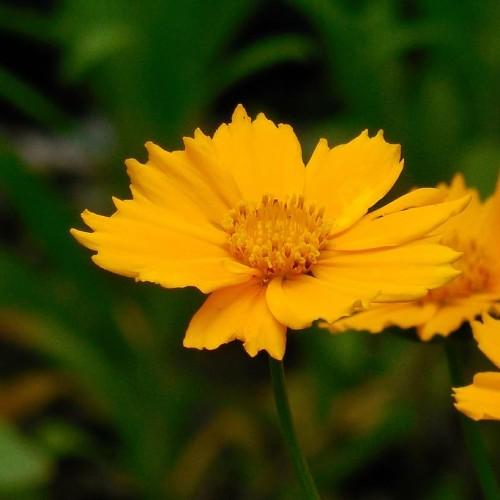
large-flowered tickseed
Coreopsis grandiflora 'Walcoreop' FLYING SAUCERS
Cycle:
Herbaceous Perennial
Watering:
Minimum
Hardiness Zone:
4 - 9
Flowers:
Flowers
Sun:
Full sun
Leaf:
Yes
Growth Rate:
High
Maintenance:
Low
Salt Tolerant:
Yes
Care Level:
Medium
watering
Water large-flowered tickseed (Coreopsis grandiflora 'Walcoreop' FLYING SAUCERS) once or twice weekly. If the soil is dry an inch below the surface, water thoroughly so the entire root system receives moisture. After watering, allow the soil to dry out before watering again. During warmer months, large-flowered tickseed may require more frequent watering, up to twice a week. Conversely, during cooler months, when growth slows, less frequent watering may be needed.
sunlight
Large-flowered tickseed plants (Coreopsis grandiflora 'Walcoreop' FLYING SAUCERS) thrive in full sun locations that receive at least 6 to 8 hours of direct sunlight a day. The best time of day to ensure maximum sunlight will vary depending on the climate, season, and specific location. In general, the best times for direct sun exposure are between the hours of 10 am and 6 pm. Avoid planting large-flowered tickseed in shaded locations, since inadequate sunlight will inhibit growth and flowering.
pruning
Large-flowered tickseed (Coreopsis grandiflora 'Walcoreop' FLYING SAUCERS) should be pruned annually in early spring, as soon as new growth indicates signs of growth. Pruning for these plants should be done to remove any damaged or dead branches, as well as branches that may be overcrowded or have grown too dense. Pruning off the top of the main stem may be beneficial in order to encourage bushier growth. Additionally, spent flowers should be removed in order to encourage further blooms.
